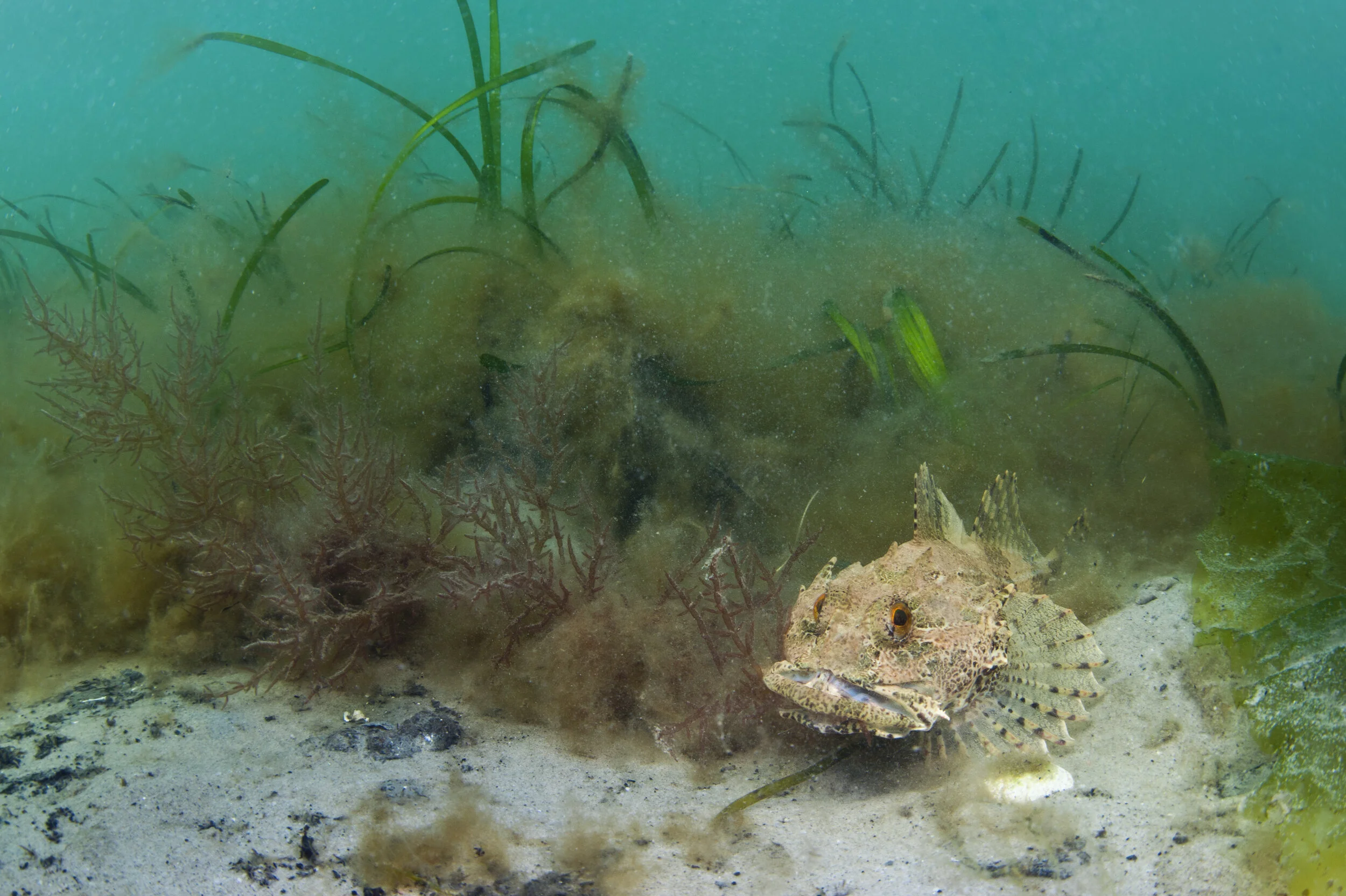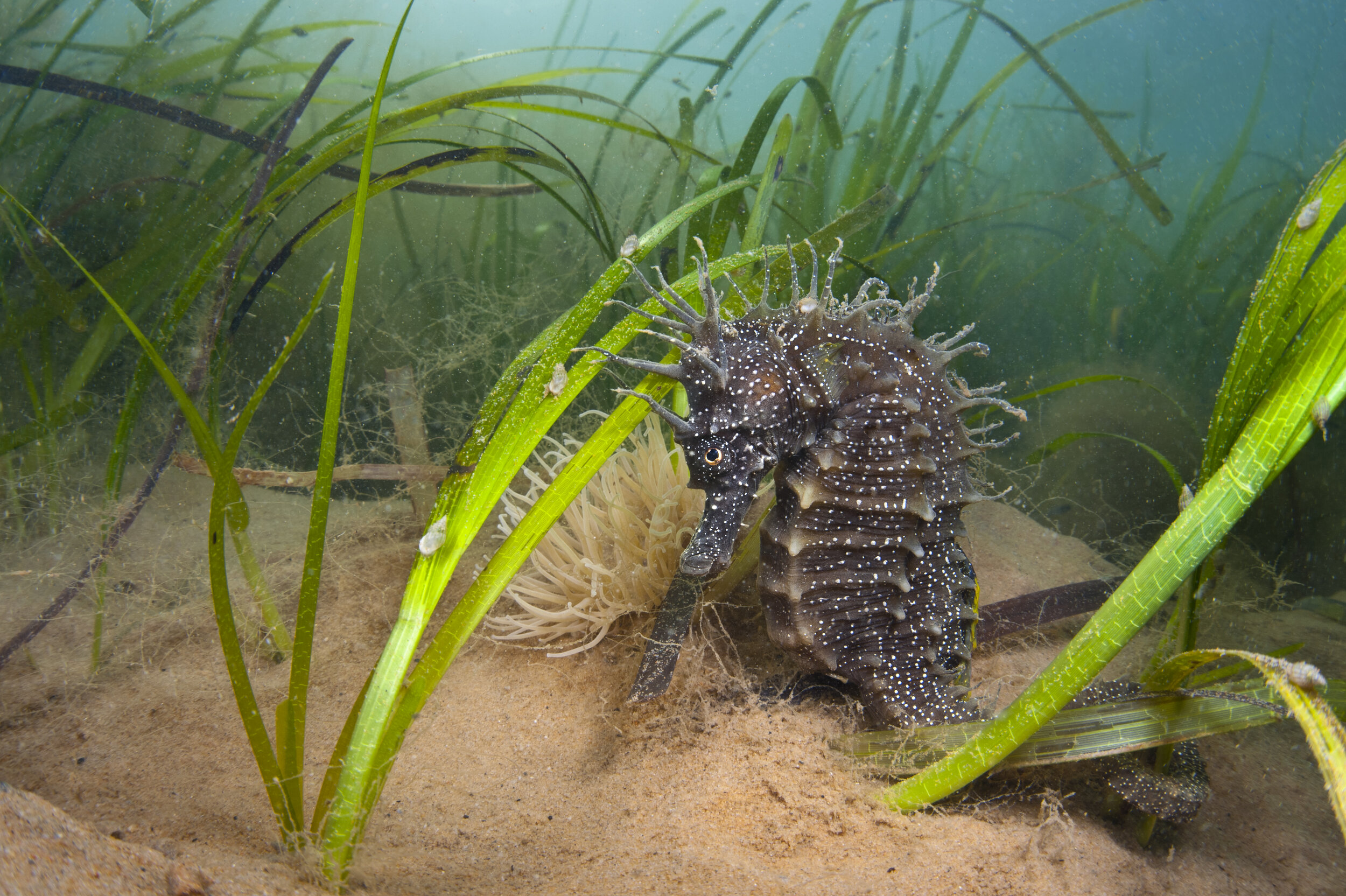Restoring Seagrass Beds
Loveday Trinick
The Ocean Conservation Trust in South England is working to restore the marine ecosystem, one blade of grass at a time. Through the help of scientific divers, they are planting underwater plots to cultivate healthy seagrass beds. All this hard work will lead to increased animal habitat, higher carbon sequestering, and help to restore balance to the native ecosystem.
There are many incredible habitats around the south of England. Some of these habitats are visible when we walk and explore the coastlines such as woodlands, heath, and grasslands alongside cultivated farmland. These habitats support a variety of wildlife, with insects, birds and mammals thriving in these places. Often unseen are the habitats off the shore. Hidden away, beneath our coastal waters. These places are full of marine life and are of enormous importance to humans. Seagrass is one such habitat. It supports many species of fish of commercial importance. Seagrass also protects our shorelines from damaging waves and stores carbon which helps build resilience against climate change.
Fish hiding in the seagrass. Photo: Corinna Ingram.
Because they are out of sight, habitats such as seagrass can be damaged without people realising. Our everyday actions can have impacts which can be difficult to see. Over time, these impacts can lead to the disappearance of these habitats, and the animals which rely on them. Seagrass habitat around the UK has declined by around 92% over the last century. This sort of decline can have negative impacts on the fishing industry, can increase coastal erosion and affect carbon levels in the environment. By restoring and protecting seagrass, we can improve the habitat for the animals which live there as well as improving the services these habitats provide for humans.
In June 2020, the Ocean Conservation Trust (OCT) opened a seagrass cultivation lab within the National Marine Aquarium (NMA), the first of its kind in the UK. This lab is designed to grow seagrass in batches to be sown into the ocean at predetermined sites. There are several stages to this process.
SCUBA diver collecting seagrass. Photo: Corinna Ingram.
Firstly, suitable sites for collection need to be identified. These sites should consist of healthy seagrass beds, with a large extent of densely growing seagrass and with a high number of reproductive shoots. Seed collection involves collecting the seed-bearing reproductive shoots. Each reproductive shoot consists of approximately 40 seeds, so 17,500 shoots need to be collected to reach the target of 700,000 seeds. Seed collection is a little like mowing a grass meadow, but by hand, and underwater! Divers hand-pick each shoot, leaving the base and rhizome (root) of the plant, ensuring that the bed remains intact. Collecting from a healthy bed safeguards the habitat even further.
All the precious seeds are then transported back to the Seagrass Lab at the NMA and are held in specialised tanks. Conditions are carefully controlled to mimic their natural environment – light levels, water movement and water quality are all at optimum levels to promote the seeds to naturally fall out of their shoots.
To date, the OCT dive team have conducted four days of seed collection dives in different locations along the south coast and have nearly fulfilled their mission of collecting 700,000 seeds. This work will go a long way towards helping to protect this incredible habitat which is found right on our doorstep.
All this work is carried out with the purpose of restoring a habitat which is vital to us all.
Below are 5 reasons why we all need healthy seagrass habitats.
1. Seagrass is a flowering plant
Just like plants on land, seagrass has roots, makes seeds and needs light to grow. This makes seagrass different to seaweeds (algae) because they have no roots, relying instead on a holdfast, a hand-like gripping structure, to provide a strong anchor to the seafloor. This makes seagrass the only flowering plant to be found in the Ocean.
2. Seagrass grows around the world
Seagrass grows in both cool water and in the tropics. In the UK, we have four species of this super plant, two of which are found in the Ocean. Zostera marina and Zostera noltii are both species of Ocean-growing seagrass known as eelgrass. Worldwide, there are over 70 species of seagrass, found in a variety of coastal locations. Globally, they support an enormous array of life, including juvenile sharks and rays, as well as turtles and manatees, which survive by eating the seagrass.
3. Seagrass provides a sheltered habitat
Seagrass is a nursery for juvenile fish. It also supports an enormous amount of invertebrate life as well as harbouring rare species such as stalked jellyfish and seahorses. This is of enormous importance to the fishing industry because the fish which spend their juvenile years in this nursery will become the adult fish our fishermen catch and deliver to our tables.
Spiny Seahorse in the seagrass. Photo: Corinna Ingram.
4. Seagrass is a natural coastal defence
Seagrass takes energy out of the waves approaching our shores, protecting coasts from erosion. When habitats like seagrass are removed, waves can become more destructive, washing away our coastlines. Without the seagrass roots, the sediment can also wash away under the sea, affecting the animals which live there
5. Seagrass stores carbon
This amazing plant stores carbon in the sediment which surrounds its roots. This ability has huge potential for helping the fight against climate change. In fact, the amount of carbon storage ability could rival that of the rainforests.
The Ocean Conservation Trust is working to protect and restore seagrass as part of LIFE Recreation ReMEDIES, a four-year project to improve the condition of sensitive seabed habitats at five Special Areas of Conservation along England’s south coast. It is funded by the LIFE programme and led by Natural England.
Blue Missions showcases the work of marine organisations dedicated to protecting our oceans.
If you’ve enjoyed this article from The Ocean Conservation Trust, you can follow them on Twitter @OceanCTrust, or on their website.
Look out for more Blue Missions articles from Madison Churchill, and follow her here.
Want to write for us? Check out our ‘Get Involved’ section.



